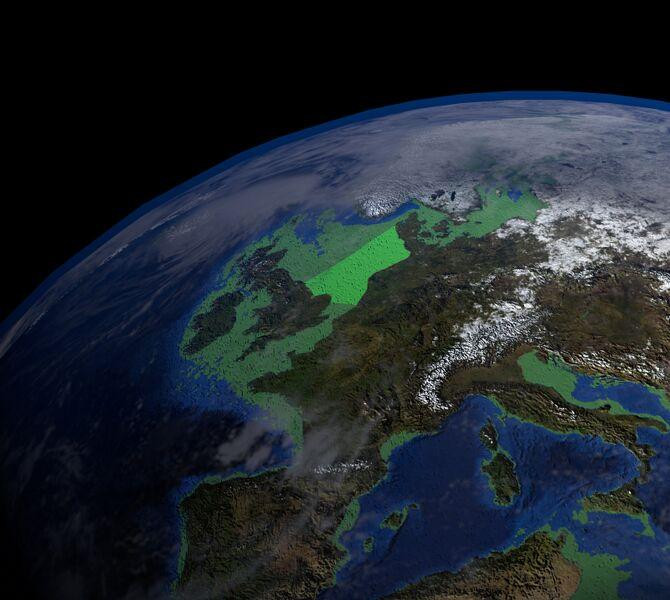Doggerland: Secrets of ancient land submerged beneath North Sea to be revealed

Scientists are set to reveal the secrets of Doggerland, an ancient landscape that was wiped out by a tsunami about 8,200 years ago, then fully submerged by rising sea levels following the end of the last Ice Age.
Archaeologists, biologists and computer scientists will digitally reconstruct the prehistoric country following a €2.5m (£1.8m, $2.7m) advanced research grant from the European Research Council. Scientists expect to learn how it developed over 5,000 years, revealing clues as to how people living there moved from hunter-gatherer lifestyles into farming.
Vince Gaffney, anniversary chair in landscape archaeology at the University of Bradford, said: "The only populated lands on Earth that have not yet been explored in any depth are those which have been lost underneath the sea. Although archaeologists have known for a long time that ancient climatic change and sea level rise must mean that Doggerland holds unique and important information about early human life in Europe, until now we have lacked the tools to investigate this area properly."

Scientists will use up-to-date technology to reconstruct the landscape, producing a 3D map showing rivers, lakes, hills and coastlines. Survey ships will also recover core sediment samples from selected areas and extract millions of fragments of ancient DNA to show the plants and animals that lived along Europe's lost land.
Robin Allaby, from the University of Warwick, said the constant environment the sea floor provides means ancient DNA is preserved exceptionally well, meaning teams can reconstruct palaeoenvironments much further back than is possible on land.
They expect to find a detailed view of the society and environment at a time when catastrophic climate change affected life. "This project is exciting not only because of what it will reveal about Doggerland, but because it gives us a whole new way of approaching the massive areas of land that were populated by humans but which now lie beneath the sea," Gaffney said. "This project will develop technologies and methodologies that archaeologists around the world can use to explore similar landscapes including those around the Americas and in south-east Asia."
Martin Bates, geoarchaeologist from the University of Wales Trinity St David, said: "For the first time in the North Sea, we will be able to carry out a targeted and purposive investigation of a series of sites on the seabed. Previously archaeologists have had to rely on samples from locations selected because of impact on the seabed. In this project we have the chance to pick our sample locations and this should allow us an unprecedented look at how this landscape changed before and during transgression."
Simon Fitch, an independent researcher, added: "This project offers the potential to explore an extensive European submerged landscape in a former heartland of the Mesolithic period. The revolutionary data gathered will provide new insights into the life and territories of people during this time and revolutionise our archaeological understanding of this period."

Lord of the Rings forest and a catastrophic tsunami
In January, amateur diver Dawn Watson discovered a prehistoric forest dating back 10,000 years off the coast of Norfolk – in what would have been part of Doggerland, which once connected the UK to the rest of Europe. The oak trees are believed to have formed part of a massive forest that stretched for hundreds of miles.
Watson's partner Rob Spray told the Eastern Daily Press: "At one time it would have been a full-blown Tolkien-style forest, stretching for hundreds of miles. It would have grown and grown and in those days there would have been no one to fell it, so the forest would have been massive.
"It would have looked like a scene from The Hobbit or The Lord of the Rings, which is something we don't get in this country anymore. Geologists are very excited about it. It was a really miraculous find."
Last year, scientists from the Imperial College London reconstructed an ancient subsea landslide and found the huge tsunami it created would have inundated Doggerland with huge waves similar to those seen in the 2011 Japan earthquake and tsunami. Published in the journal Ocean Modelling, the authors said the tsunami would have wiped out any inhabitants living in the area – which sat just five metres above sea level.
Study author Jon Hill said: "[Doggerland] would have been completely inundated by a five-metre wave ... it would have been devastated ... any humans living there would have suffered a catastrophic event."
© Copyright IBTimes 2025. All rights reserved.






















